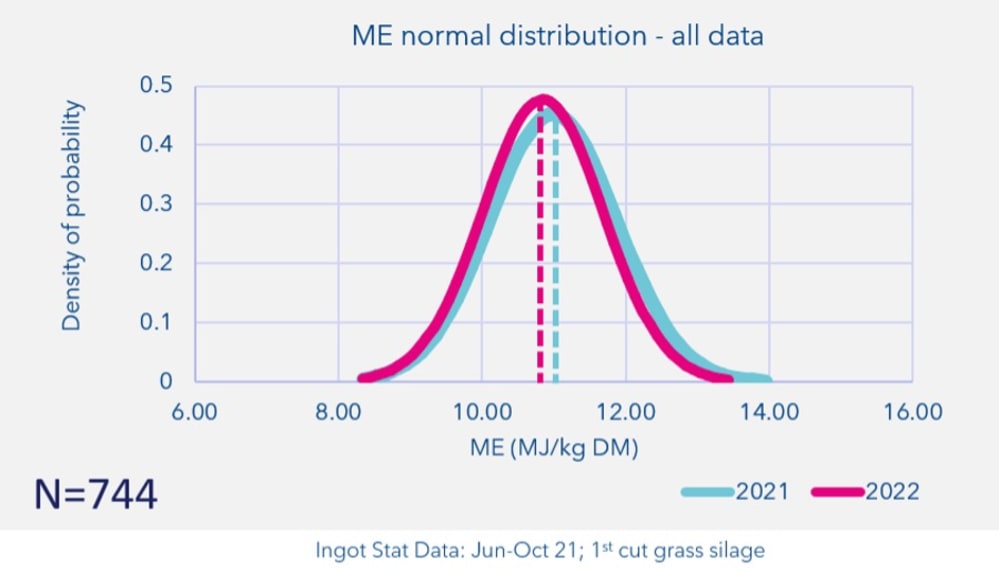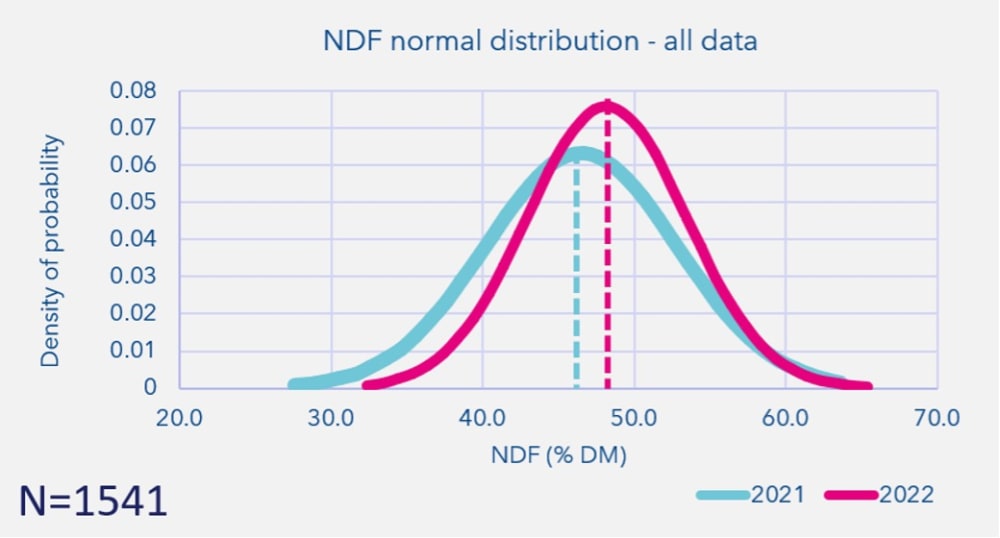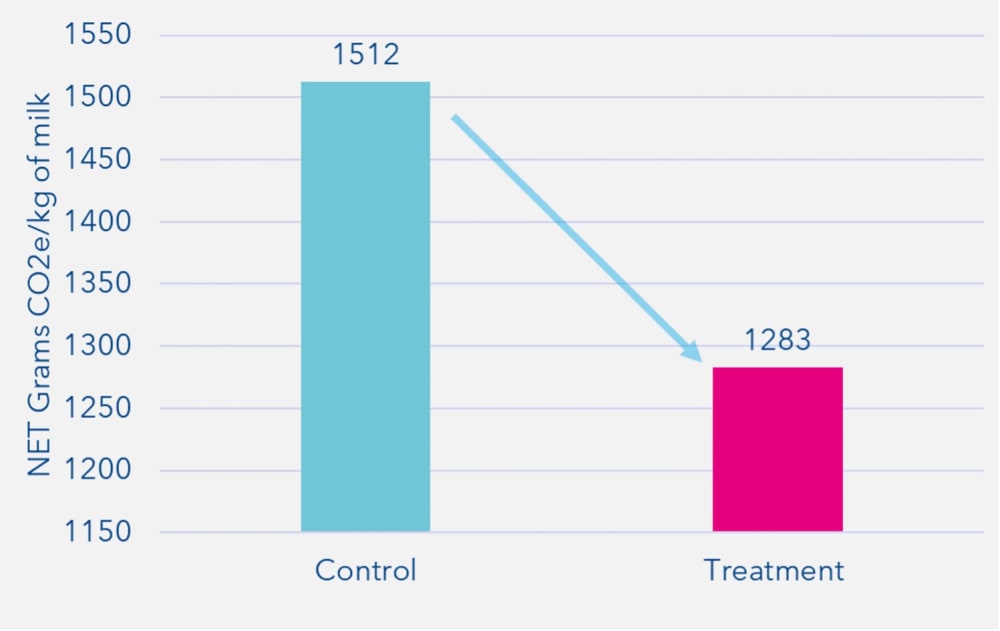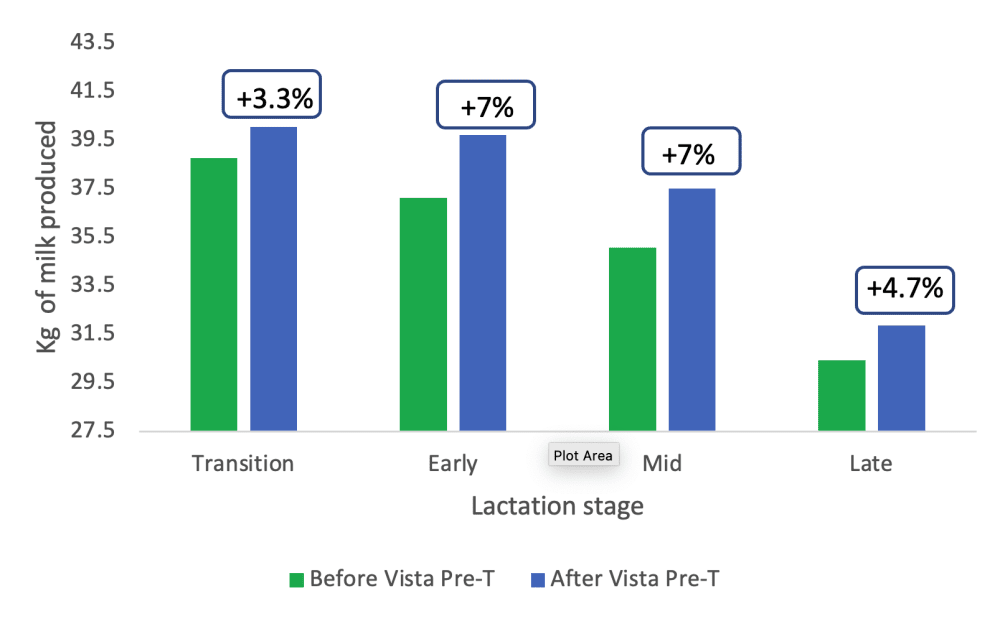Maximising the value of forage to reduce feed cost and improve sustainability
Published Tuesday, 26th September 2023By Virginie Blanvillain, Global Services Manager
The image and role of ruminants on the worldwide sustainability roadmap has been under pressure as the carbon pledge for net zero by 2050 gets stronger. It is commonly reported in the media that approximately 40% of the carbon emissions associated with livestock are due to enteric methane emissions, of which ruminants are the main contributors. While the industry is encouraged to develop solutions for reducing enteric methane emissions, there are other areas of activities which support the sustainability of livestock production systems around the world by producing more from less and making the best use of resources.
We know ruminants are the best fibre users. In symbiosis with a complex microbiota populating the rumen, they can digest carbohydrates contained in plant cell walls. By ingesting forage, ruminants transform non-human-edible energy sources into energy (and protein in the case of legumes) which can, in turn, be consumed by humans, i.e., meat and milk.
This “upcycling” role is unique to allow the use of resources which would not be consumed otherwise, hence reducing the competition for other energy sources such as cereal grains (e.g., corn, wheat, barley). By making the best use of forage, beef and dairy producers sustain the use of non-human-edible energy, such as grass, silages, legumes and other types of forage, while increasing biomass and carbon sequestration, hence promoting biodiversity.
Forage quality characterisation
Forage is essential to promote rumen function and health in cattle. We know plant cell wall digestibility is often lower than 50%. With a proper characterisation and valorisation of the nutrients and digestible energy contained in forage, forage utilisation efficiency and ration formulation can be improved, and in turn contribute to a better feed efficiency and feed cost.
Portable near infrared (NIR) instruments are now used on farm to determine forage quality. When analysing forage by NIR, nutritionists can quickly adjust formulation. As an example, we compared the quality of grass silage from the UK in 2021 and 2022. Figure 1 shows the lower metabolisable energy (ME) content as a percentage of dry matter and Figure 2 shows NDF content as a percentage of dry matter – which were promptly noticed upon harvest with the NIR. This coincided with a dry season in 2022, which negatively impacted the ME content of grass silage, while the NDF level was higher as compared to 2021.
Figure 1. Metabolizable Energy (ME) content as a percentage of dry matter, comparison between 2021 and 2022
Figure 2. Neutral Detergent Fibre (NDF) content as a percentage of dry matter, comparison between 2021 and 2022
Pre-digestion of fibre with VistaPre-T to release more energy
A crude fermentation extract from Trichoderma reesei (VistaPre-T) can be used in total mixed rations to get more energy from forage by forming pits and roughening the fibre surface, hence speeding up the microbial attachment and colonisation, assuring reduced lag time, and greater fibre digestion. A study demonstrated an increase in NDF and ADF digestibility in an in vitro rumen fermentation model. This was associated with a faster attachment and colonisation of fibre-degrading microbes in the rumen, then resulting in a greater utilization of both the hemicellulose and cellulose.
Fecal NDF and starch to evaluate carbohydrate utilisation
Fecal starch analysis is a method used to evaluate total tract starch digestibility (TTSD). When fecal starch content is lower than 3%, the value is associated with good TTSD. Portable NIR can now be used to measure the fecal starch content in fresh feces, on farm. This enables a quick evaluation of the quality of the ration, and eventually adjust formulation.
Beyond starch, fecal NDF level can be used to evaluate the efficiency of energy utilization. As an example, fresh fecal samples were collected in 8 groups of cows from 4 different dairy farms in the UK. The NIR predictions indicated an optimal fecal starch levels below 3% in all the groups of cows, whereas fecal NDF levels were high relative to dietary NDF. After VistaPre-T application, the NIR predictions indicated an 8% average reduction in fecal NDF, which demonstrated the efficiency of VistaPre-T in increasing fibre utilisation.
Two formulation strategies to increase throughput and lower carbon footprint with VistaPre-T
VistaPre-T can be formulated into the total ration to save cost. In dairy diets, VistaPre-T can generate approximately 10 MJ of additional energy (coming from 0.8 MJ energy uplift per kg of forage DM, given a cow consumes 12.5kg of forage DM per day on average). This extra energy iu equivalent to 300g of protected fat per cow/day.
A study was performed involving 147 Holstein-Friesian dairy cows in the UK. After assigning the energy uplift value to VistaPre-T, the least-cost reformulation allowed to reduce the ground maize, molasses and protected fat usage, while adding more grass silage. In addition to a 9% increase in milk yield with no effect on milk composition, VistaPre-T resulted in a 15% reduction in the carbon footprint of fat and protein corrected milk.
Figure 3. Calculated net grams of CO2 equivalent per kg of fat and protein corrected milk of dairy cows. Farm Footprint model, by Sustain Intellync.
Alternatively, VistaPre-T can be applied on the top of the ration to enable extra energy supply and improved performance. In another study, 350 milking cows maintained as one group were fed a maize and grass silage-based ration, with VistaPre-T applied on the top of the ration. The average milk yield (kg/cow/day) in the pre-trial period and after feeding VistaPre-T was recorded and indicated increased milk yield in every stage of lactation.
Average milk yield increase with VistaPre-T per lactation stage. Transition: 0-50 days in milk (DIM), early: 51-100 DIM, Mid: 101-200, Late: 201-400.
Figure 4. Average milk yield increase with VistaPre-T per lactation stage.
Conclusion
Beyond the commitment of the industry for reducing enteric methane emissions in livestock, improving overall feed efficiency is a mean to support the sustainability of livestock production. By improving the efficiency fibre utilisation, VistaPre-T is one alternative that may be considered to increase the usage of home-grown forage, while reducing the use of non-human edible resources.
Latest news
Stay ahead with the latest news, ideas and events.

Online Feed Fibre Calculator
Calculate the percentage of dietary fibre in your feed
Our calculator is designed for nutritionists and uses averages of global raw materials to calculate the dietary fibre content (plus other more in-depth fibre parameters) of finished animal feed. These parameters are available within AB Vista’s Dietary Fibre analysis service (part of our NIR service).
Sign up for AB Vista news
A regular summary of our key stories sent straight to your inbox.
SUBSCRIBE© AB Vista. All rights reserved 2025
Website T&Cs Privacy & Cookie Policy Terms & Conditions of Sale University IDC policy Speak Up Policy




























